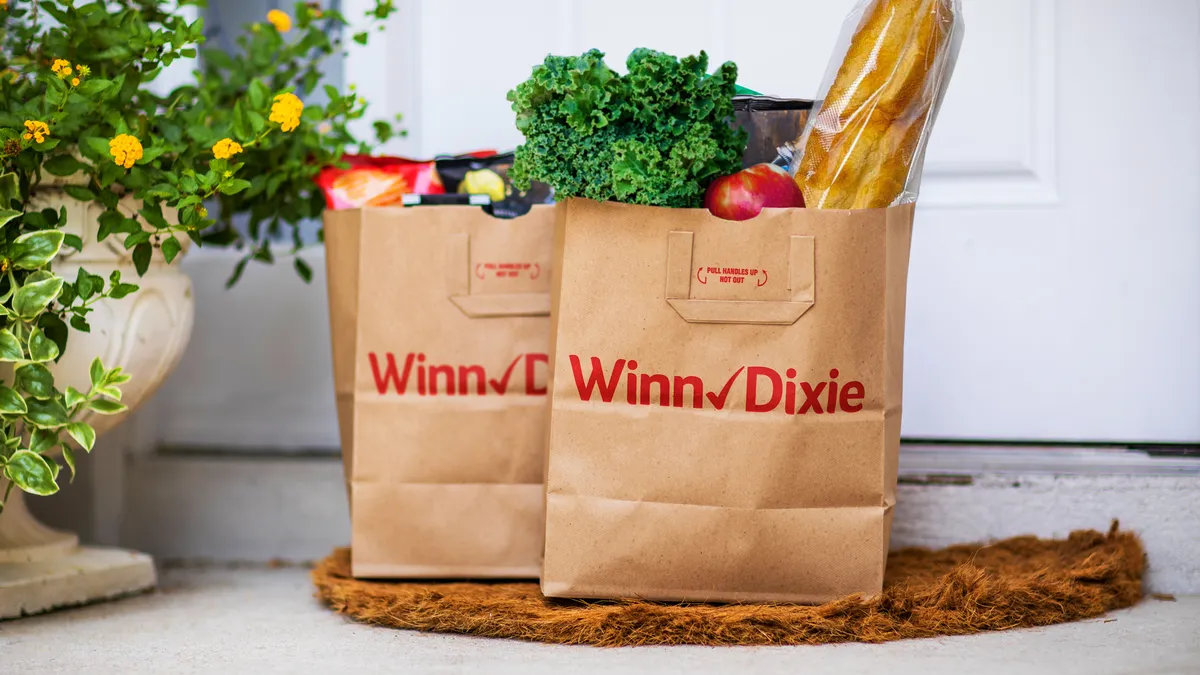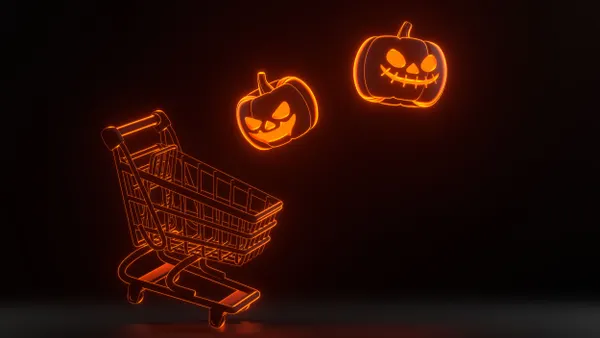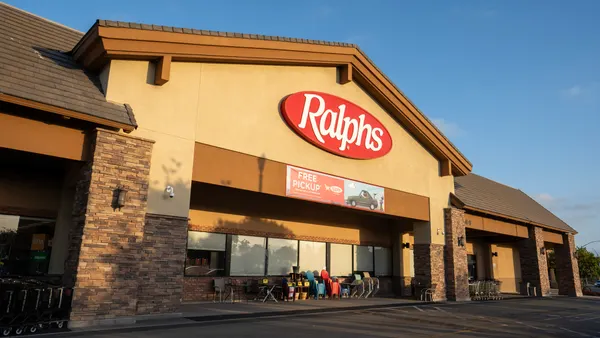Dive Brief:
- Grocery e-commerce sales in the U.S. fell 7.6% last month compared with the same period in 2022, to $8 billion, according to a report released Tuesday from Brick Meets Click and Mercatus.
- Pickup sales were off by 8.5% in March, while delivery sales declined 7.4%.
- Cost has displaced convenience as the top consideration for online grocery shoppers in deciding where to purchase groceries and which fulfillment method to select.
Dive Insight:
The findings from Brick Meets Click and Mercatus make clear that rising prices are having a strong effect on grocery e-commerce trends across the board, with people’s income playing a central role in determining their online shopping behavior.
Forty-four percent of households that placed an online grocery order for pickup or delivery from a grocery or mass merchant said the most important factor in determining the service they used was “not paying more than necessary,” according to the report, which is based on a survey of 1,742 adults the firms conducted on March 30 and March 31.
Shoppers with annual household incomes below $50,000 were 34% more likely to opt for pickup, while households earning more than $200,000 per year were twice as likely to have their order delivered, David Bishop, a partner at Brick Meets Click, said in a statement. Lower-income shoppers are especially drawn to pickup because the channel is less expensive than delivery, Bishop said.
The recent elimination of emergency SNAP benefits — provided to participants in the government-sponsored nutrition program in response to the COVID-19 pandemic — likely played a role in causing interest in pickup to decline more rapidly than it did for delivery, Brick Meets Click and Mercatus noted.
The firms also reported that the likelihood that a shopper who places an online grocery order will place another order with the same retailer during the ensuing 30 days, known as a repeat intent score, declined by nearly 3 percentage points in March compared with the same month in 2022. First-time shoppers and those in lower-income groups tended to have lower repeat intent scores than people who placed four or more online orders during the prior three months or were more affluent, according to the data.
Monthly order frequency, a key measure of people’s interest in using digital channels to buy groceries, declined in March to 2.42 — its lowest level since the onset of the pandemic in March 2020. In a reflection of the lasting impact the public health crisis has had on the grocery industry, however, that figure was still almost 20% above its pre-pandemic level.
The drop in monthly order frequency was larger among traditional grocers than it was for mass retailers like Walmart and Target, which have been grabbing market share in the online grocery space.














